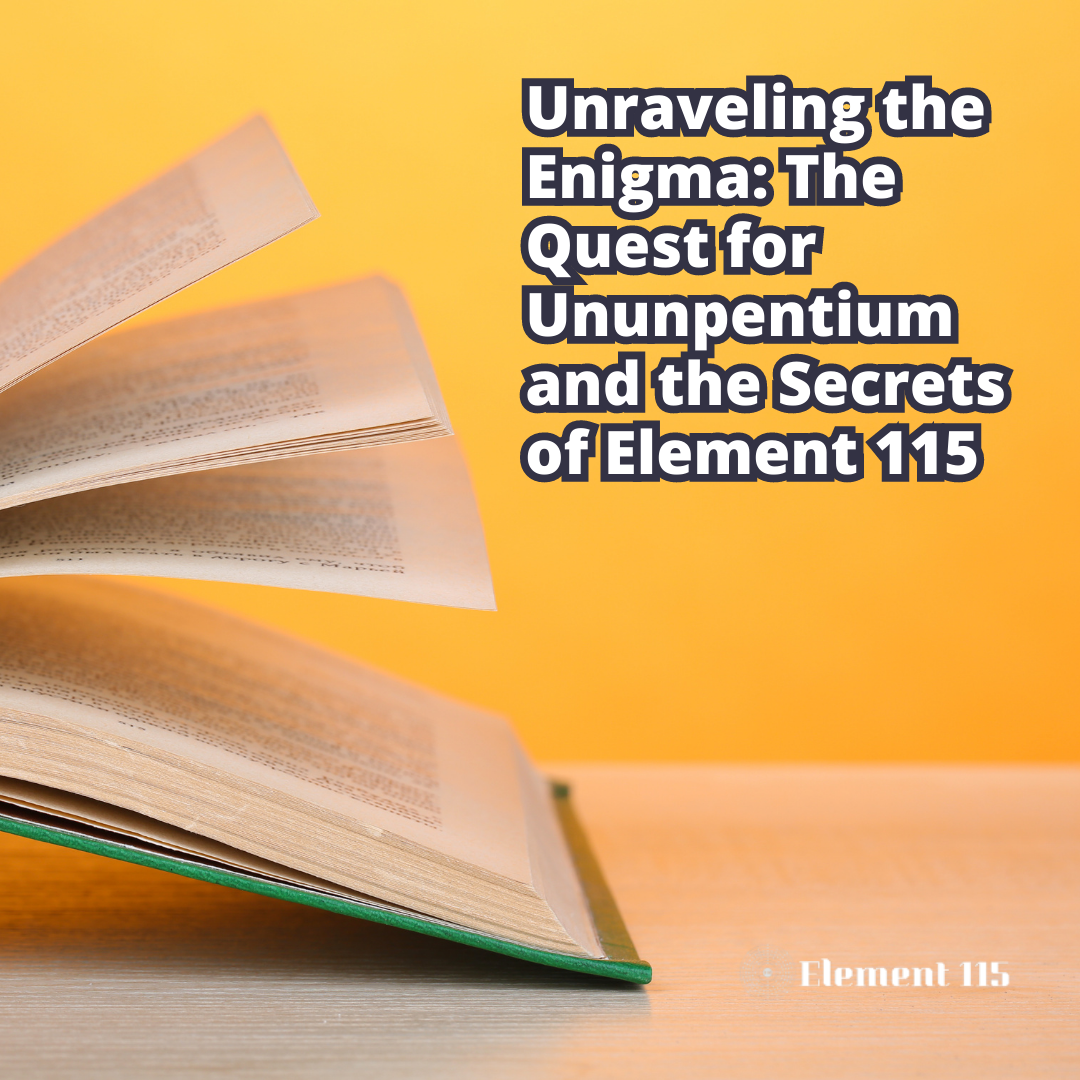
Unveiling Element 115: Journey to the Unknown
Unveiling the Secrets of Ununpentium: The Hunt for Element 115
In the world of science, few pursuits are as exhilarating as the search for new elements. It's a journey that takes us to the outer reaches of the periodic table, delving into the mysteries of the universe's building blocks. In a remarkable stride forward, an international team of physicists, spearheaded by the brilliant minds at Lund University, has thrust us into the heart of discovery once again. Their groundbreaking work has confirmed the existence of a synthetic super-heavy element with the atomic number 115, colloquially known as Ununpentium (Uup).
The story begins back in 2003 when this elusive element first caught the attention of researchers. Unlike well-known elements that bear familiar names like hydrogen, oxygen, and gold, Ununpentium was, for the time being, christened with its systematic placeholder: Element 115. Often referred to as eka-bismuth, it's a substance that tantalizingly defies our intuition, beckoning us to learn more.
The name "Ununpentium" itself holds a clue to its atomic nature. Derived from its atomic number 115, it's a linguistic fusion where "un-" hails from the Latin word "unum," meaning one, and "pent-" finds its origins in the Greek word for five. Thus, the very name weaves together the elemental essence of this mysterious creation.
The epicenter of this scientific endeavor lies at the GSI research facility in Germany, where physicists embarked on a quest to uncover the truth behind Ununpentium. Their endeavors were not isolated; they stood on the shoulders of giants – scientists from the Joint Institute for Nuclear Research in Dubna, Russia, and the Lawrence Livermore National Laboratory in the United States, who had previously conducted pioneering measurements in this realm.
"This was a very successful experiment and is one of the most important in the field in recent years," exclaimed Prof. Dirk Rudolph, a luminary from Lund University. He stands as a first author of a paper that's now poised for publication in the esteemed Physical Review Letters. Prof. Rudolph, along with his exceptional colleagues, orchestrated an intricate ballet of particles. By bombarding a delicate americium-243 film with calcium-48 ions, they managed to capture an X-ray 'fingerprint' of Ununpentium. It's a moment frozen in time, a testament to human ingenuity and a testament to our quest for knowledge.
Beyond the immediate victory of confirming Ununpentium's existence lies a broader horizon of insights. Through their experiments, these dedicated scientists have grasped a more profound understanding of the structure and properties of super-heavy atomic nuclei. It's as if they've opened a door to a world where the very essence of matter plays by different rules, beckoning us to comprehend the universe in all its complexity.
What comes next on this remarkable journey of discovery? The experts at the International Union of Pure and Applied Chemistry now hold the baton. They're set to review the new findings, paving the way for decisions that will shape Ununpentium's destiny. Will it retain its temporary moniker, or will it be unveiled under an official name that encapsulates its grandeur? Only time will tell.
Intrigued? Curious minds can dive deeper into the scientific tapestry woven by Prof. Dirk Rudolph and his team by exploring the paper themselves. For those who hunger for knowledge, the gateway to greater understanding can be found here: Ununpentium: The Science Behind Element 115.
The journey into the heart of matter is one that keeps humanity moving forward. Ununpentium's discovery is more than just a milestone – it's an invitation to unravel the enigma of the universe, one element at a time.



